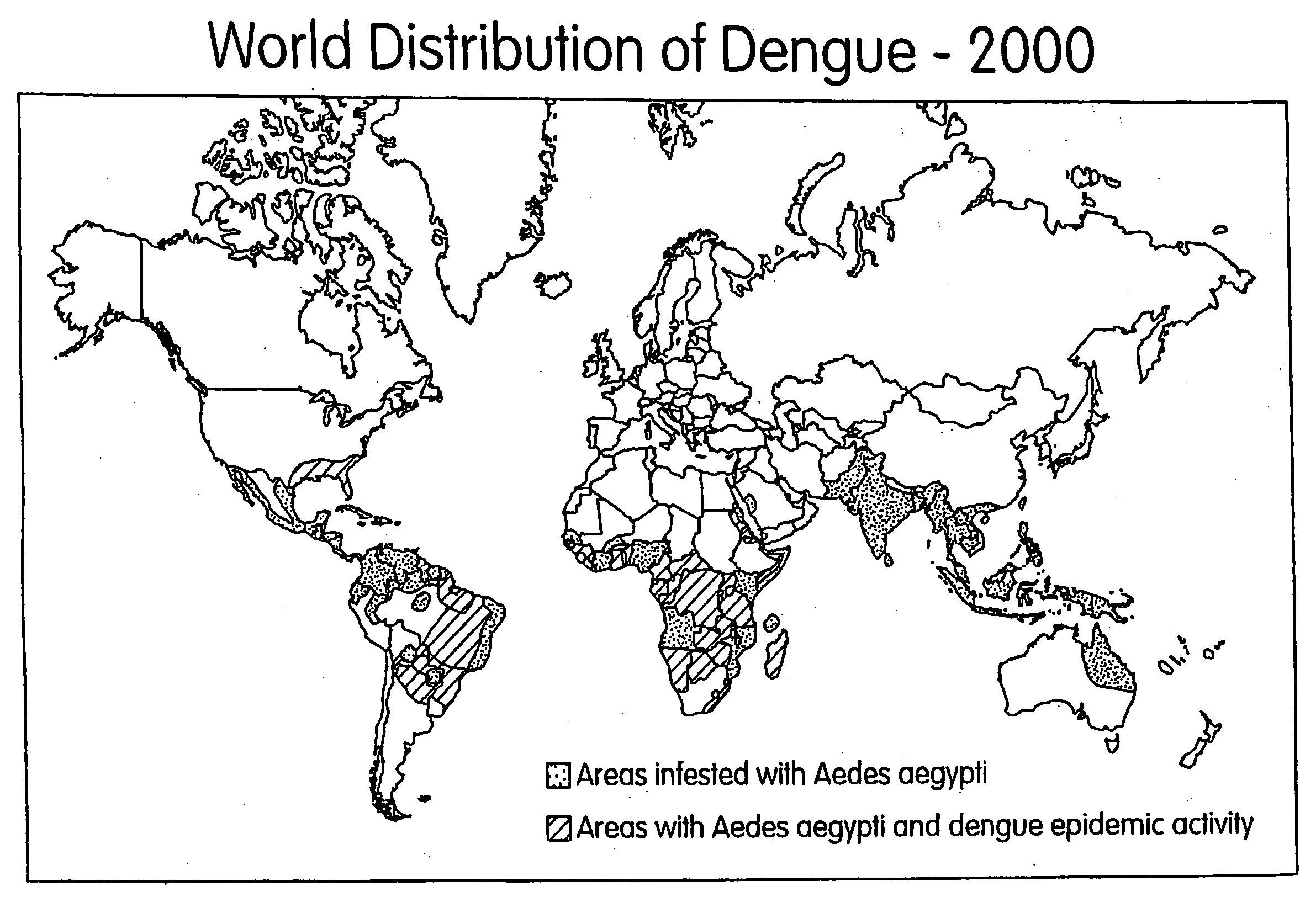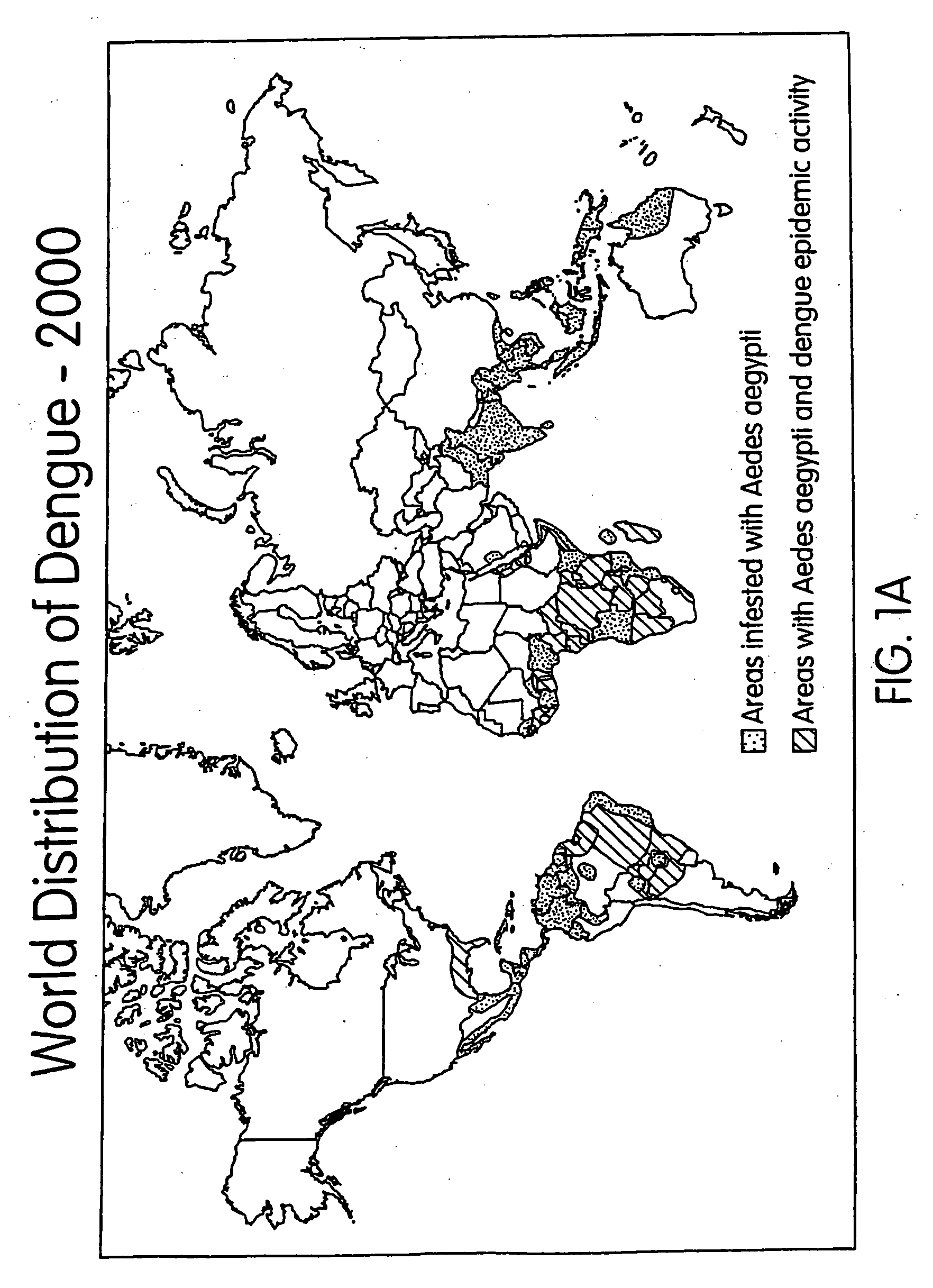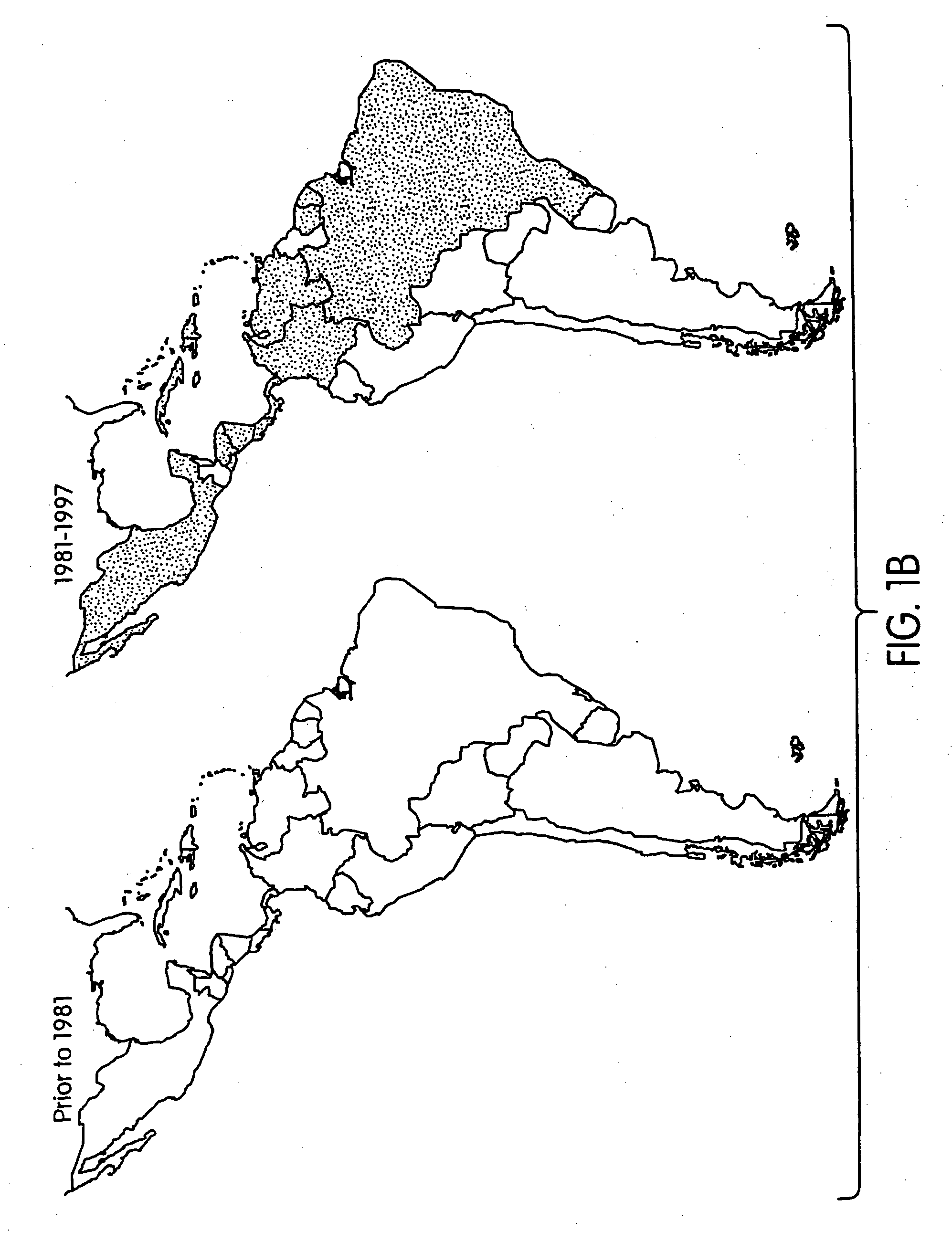It is estimated that the worldwide costs associated with the treatment of such mosquito-transmitted diseases runs well into the billions of dollars.
In addition to the illnesses and deaths caused to humans, mosquito-transmitted diseases are a major cause of economic losses to livestock industries due to veterinary diseases.
With increased travel and world commerce it also is expected that some of these diseases will become major health problems in the continental United States and elsewhere.
For example, the emergence of the West Nile virus in temperate regions of Europe and North America supports this expectation, which represents a threat to public, equine and animal health.
It can result in encephalitis (inflammation of the brain) in humans and horses, and mortality in domestic animals and wild birds.
Dengue fever is a particularly dangerous mosquito-transmitted disease that is increasingly becoming a problem of global proportions and may soon eclipse malaria as the most significant mosquito-borne viral disease affecting humans.
The tiger mosquito is already proving a nuisance and hazard in Pulaski County, Illinois, where bite counts of the insect were 25 per minute.
As will be appreciated from the following discussion, each of these methods have significant drawbacks which render them impractical or ineffective.
However, larvicides are often not particularly effective for a variety of reasons.
Also, several species of mosquitoes, such as tree-hole breeders, root-swamp breeders, and cattail-marsh breeders, are not easily controlled with larvicides since the larvae either do not come to the surface (e.g., cattail marsh mosquito) or the water sources are so difficult to locate that the larvicide's cannot be economically applied (e.g., tree holes).
This not only makes the spraying of insecticides impractical due to the difficulty associated with effectively targeting such areas, many people are also uncomfortable with the use of chemical pesticides so close to their homes.
Specifically, general public perception of the long-term health hazards presented by certain chemicals, such as DDT, has led to the banning of their use for mosquito control in many parts of the United States and other countries.
Additionally, increasing pesticide resistance among mosquitoes has reduced the effectiveness of the chemicals conventionally used, thus bolstering the argument that the supposed benefits of chemical pesticides do not outweigh public health risks.
Unfortunately, efforts in the past to utilize natural predators for effectively controlling mosquito populations have proven ineffective.
However, these towers were ineffective at adequately controlling the local mosquito populations.
These repellents by their nature do nothing to actually control the mosquito population; instead, they simply offer temporary relief to the person employing the repellent.
Although these repellents are fairly inexpensive, they often have an offensive odor, are greasy, and are effective for only a limited duration.
In addition to being unpleasant, many repellents are coming under close scrutiny with respect to the potential long-term health hazards they may pose.
Despite the long-term widespread use of DEET, the U.S. Environmental Protection Agency (EPA) believes that DEET may have the ability to cause cancers, birth defects, and reproductive problems.
These products may provide some relief from mosquito activity; however, they do not reduce the number of mosquitoes in a region, and they emit smoke and chemicals into the vicinity.
Also, with even the slightest breeze, their potential effect is diminished, as the smoke and chemicals are dispersed over a large area and thus become diluted and less effective.
This treatment was only slightly more effective than burning plain candles around a protected area.
In fact, it is believed that burning the candles increases the amount of carbon dioxide in the air, causing more mosquitoes to be drawn into the general area rather than reducing the number of mosquitoes in the area.
Despite these drawbacks, the current market for citronella-based products is quite large.
Although totally ineffective at killing mosquitoes, bug zappers sell at a current rate of over 2,000,000 units annually.
The inability of these devices to kill mosquitoes has been proven in academic studies and the personal experiences of many bug zapper owners.
Specifically, electrocution devices do not kill mosquitoes because they do not attract most types of mosquitoes.
The reason for this is that these devices only attract insects that are attracted to light, which is not the case with most types of mosquitoes.
The problem with this arrangement is that consistency in the catalytic conversion reaction was difficult to achieve on a mass production basis.
It is believed that this is because using spheres caused a significant amount of turbulence in the air flowing therethrough and also loose packing of the spheres resulted in inconsistencies in the amount of catalytic surface area exposed to the exhaust gas.
This is undesirable because unburned fuel in the resultant exhaust gas is believed to be an insect repellent.
The device disclosed in the '243 patent, while functioning effectively, has a high part count and its assembly steps are likewise relatively time consuming.
 Login to View More
Login to View More  Login to View More
Login to View More 


